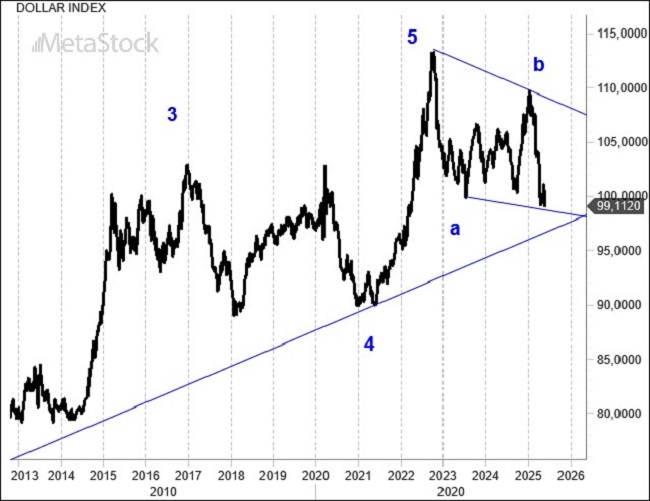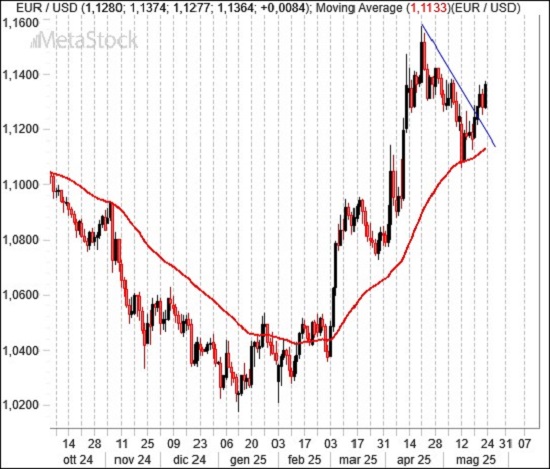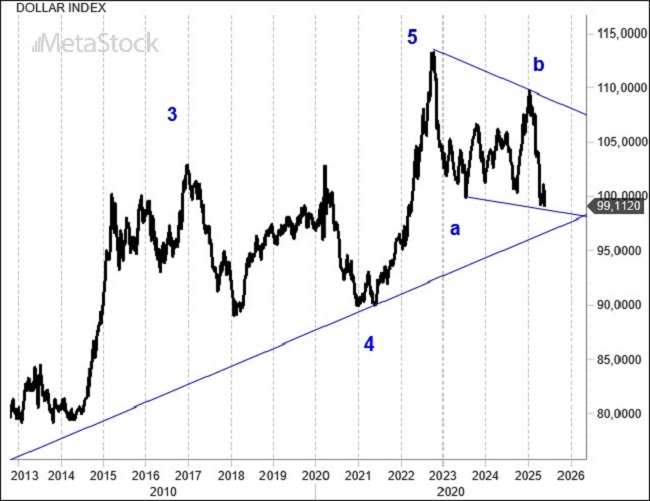- The aftermath of the U.S. credit rating downgrade continues to affect the bond market, with U.S. yields recovering and the dollar unable to capitalize on this yield advantage. The Fed reiterates its stance of not being overly expansive with rates in the coming months.
- In Europe, there are signs of increased investor confidence. Stock markets show better relative strength, and the euro maintains its strength against the dollar. However, Trump threatens new tariffs of 50% amid stalled negotiations.
- EUR/USD holds steady at key support levels, regaining ground after the U.S. rating downgrade. A prolonged trading range is expected.
U.S. Debt Downgrade: A New Market Response and Rising Yields
The downgrade of the U.S. debt rating did not have the same impact as it did nearly 15 years ago. Back in 2011, when S&P downgraded the U.S. rating for the first time, the stock market lost 7%, while Treasury yields fell in search of what seemed like a paradoxical “safe haven.”
This time, last Monday, when Moody’s came to the same conclusion after 14 years, the market responded differently—with indifferent stock markets and rising bond yields.
A rise in rates that appears to be spreading to other countries, including Japan, where 30-year yields surpassed 3%, the highest in 40 years.
The Congressional Budget Office (CBO) predicts a sharp increase in the U.S. debt-to-GDP ratio over the next 30 years, from 98% to 155% without corrective actions. This inevitably leads to the market demanding a higher risk premium, further increasing the cost of servicing the debt. Trump’s likely new attacks on Powell and the Fed, who are keen to understand the impact of tariffs on prices and employment, seem inevitable.
While the market enjoys this limbo period caused by tariffs and waits for developments in the Russia-Ukraine conflict, the Fed continues to send clear signals on its monetary policy. Nothing will change until at least September.
In Europe, the week closed negatively after Trump threatened to impose new 50% tariffs on European imports if ongoing negotiations do not yield results. Meanwhile, the ECB remains on hold, awaiting data that could confirm whether further rate cuts are warranted. The renewed closeness to the UK after Brexit in 2016 is an important signal of trust, reinforcing the market’s ongoing support for the euro, which shows no signs of abandoning key support levels around 1.10.
Technical Analysis: Dollar Index Holds Support as Bearish Trend Faces Challenges
For the Dollar Index, the support zone just below 100 has held firm, even when considering the strength of previous highs in 2016 and 2020. A reaction was expected, and although it did occur, it did not extend much beyond the lows, suggesting structural weakness in the greenback.
The idea of a “flag” pattern continuing its formation remains intact, with the dollar unlikely to retest the lows in the short term, awaiting the end of the summer when stronger outflows from the U.S. dollar could reappear. For now, the crucial support level for the Dollar Index is around 97, the point where the uptrend line from the 2011 lows intersects.

The 50-day moving average has done an excellent job containing prices, helping lift the euro. Even the 2024 highs struggled to contain the greenback’s strength, and now there’s an attempt to break the brief bearish sequence that started on April 21.
The fact that the dollar’s weakness coincided with the U.S. rating downgrade and rising rates indicates investor mistrust toward U.S. debt.



Leave a Reply
You must be logged in to post a comment.